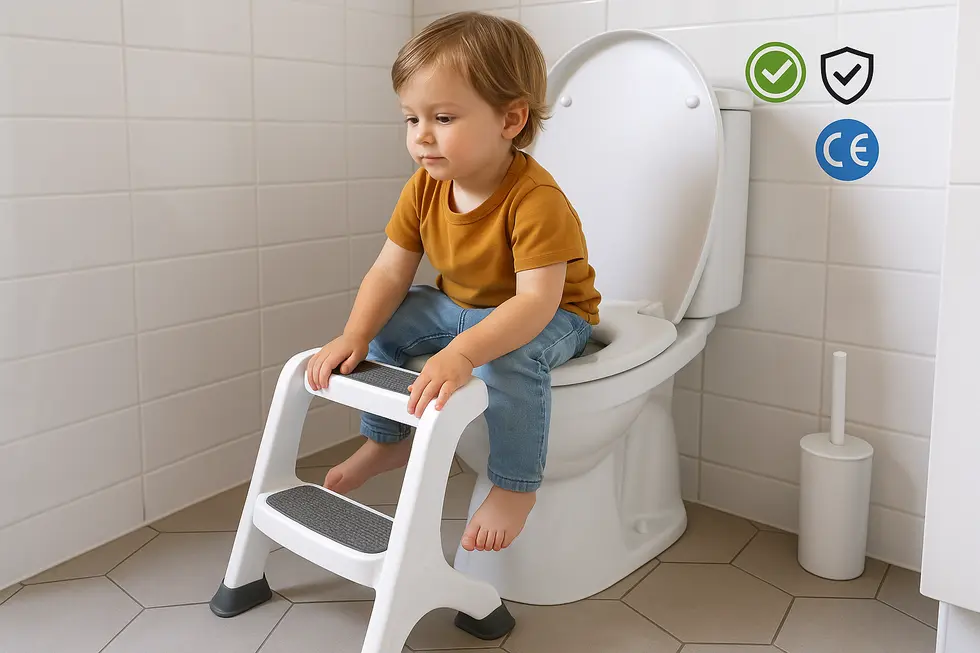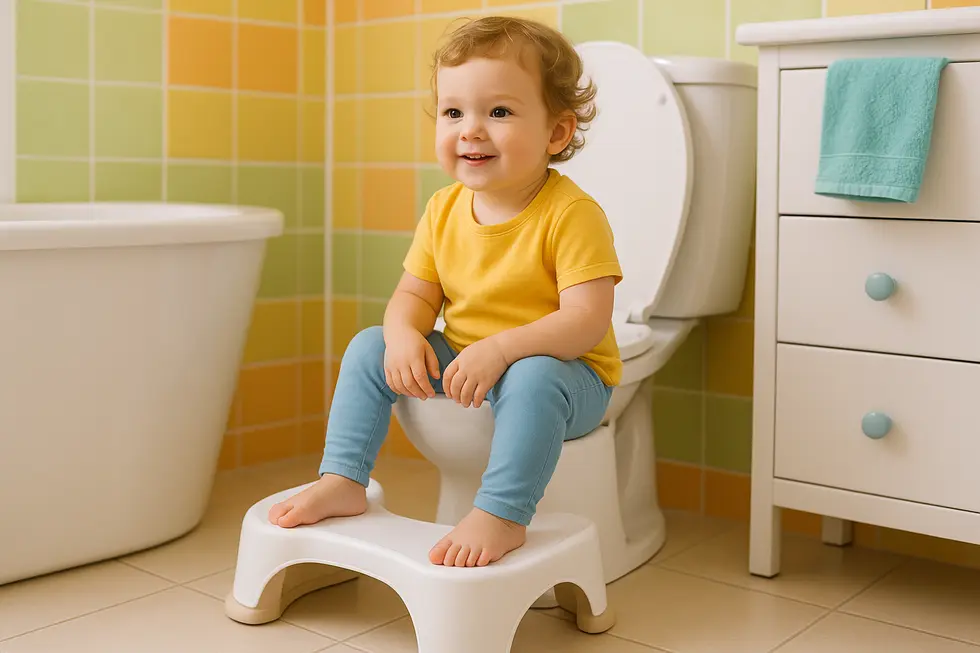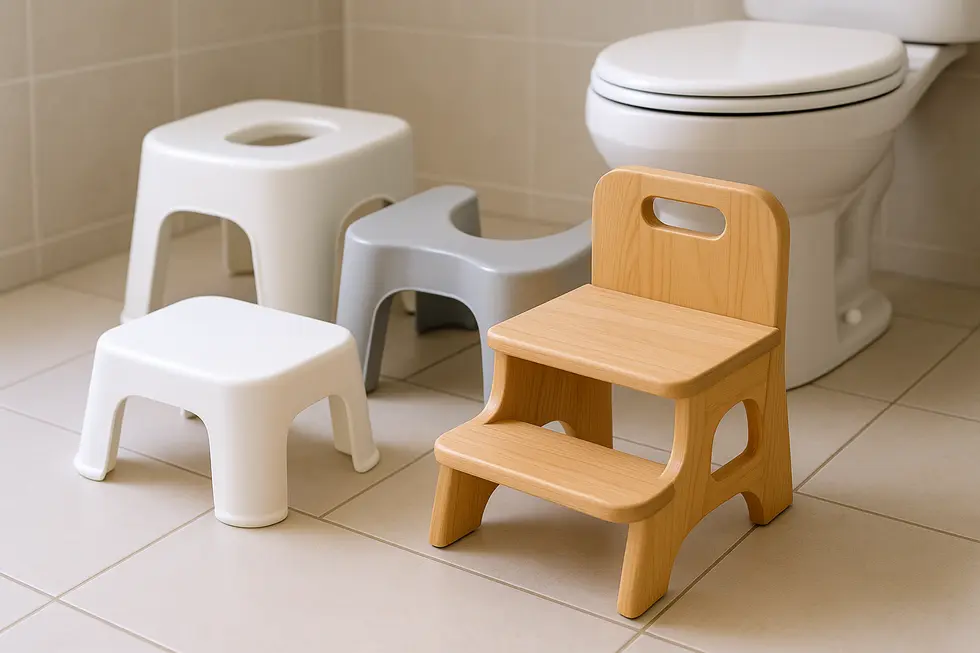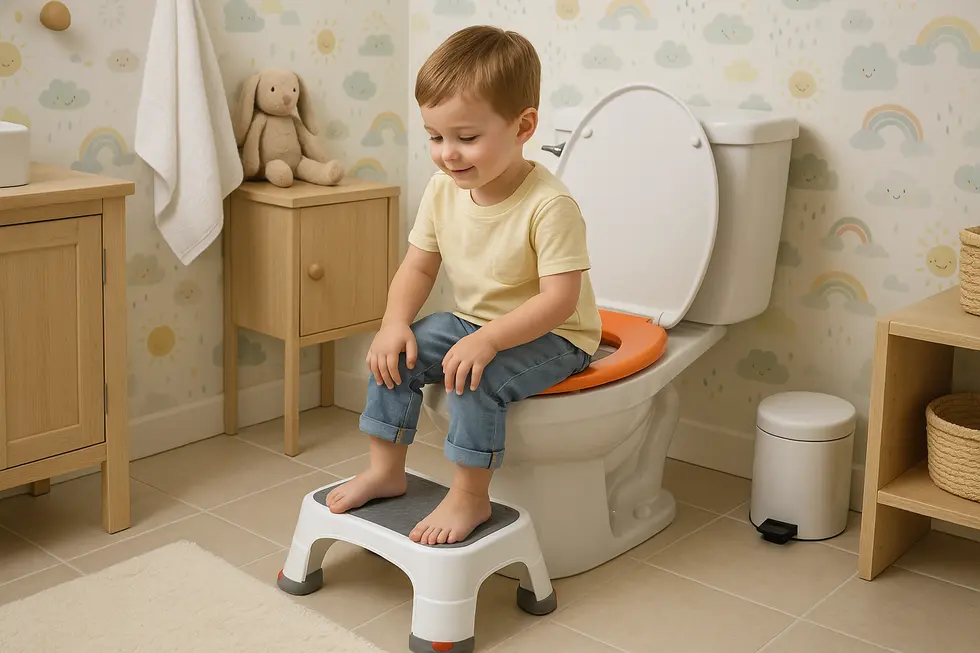Toilet Stools
Essential Guide to Toilet Stools for Kids
Toilet stools for kids play a crucial role in promoting independence and safety during early childhood. For families, understanding the key features, safety standards, and the ergonomic benefits of these stools can make a significant difference in children’s bathroom routines. This article explores three core aspects: regulatory safety standards, the ergonomic design benefits during potty training, and the practical features and materials that cater to every child’s needs.
Balancing Safety and Standards: What Makes a Kid’s Toilet Stool Truly Compliant

Safety is more than a marketing promise; it is a measurable outcome governed by clear standards. When you place a toilet stool for kids in front of your child, every texture, angle, and coating should already have passed a checklist built on three pillars: slip prevention, structural stability, and material purity.
First comes traction. Reputable manufacturers apply textured rubber or silicone to both the platform and the feet of a toilet stool for kids so small shoes or damp socks will grip instantly. ASTM guidelines for juvenile products emphasise this anti-skid interface, while many domestic regulators insist that the underside pads remain intact after repeated mopping or bathroom humidity. A quick press test—does the toilet stool for kids shift on tile?—often reveals whether the design meets that baseline expectation.
Stability follows. The geometry of a toilet stool for kids matters more than its weight: a broad footprint, low centre of gravity, and rounded edges combine to resist tipping when a toddler climbs up sideways or leans forward to flush. Some companies validate this with dynamic load tests up to 250 lb, mirroring CPSC recommendations that furniture for children survive adult-level forces. Parents should still supervise, yet the engineering should assume a wiggly child who occasionally jumps instead of stepping down.
The third pillar—material safety—is less visible but equally critical. BPA- and PVC-free plastics, water-based paints on wood, and smooth finishes that shed bacteria satisfy health codes across North America and Europe. Look for plain-language declarations such as “meets ASTM F963” or “complies with EU Directive 2009/48/EC on toy safety.” These labels signal that independent labs have screened for heavy metals, phthalates, and sharp-edge hazards.
Beyond certification logos, holistic value matters too. A stool that resists mould, stacks neatly, and doubles as a sink step encourages daily use, reinforcing safe bathroom habits. For a deeper dive into how function and safety intersect, explore this discussion on the broader question of whether toilet stools deliver real benefits the safety and value of toilet stools.
Ultimately, compliance is not a single stamp but an ecosystem of standards working together. One well-known European maker illustrates this approach, detailing non-slip surfaces, BPA-free plastics, and stability testing on its certification page.
From Dangling Legs to Confident Steps: Ergonomic Toilet Stools That Accelerate Kids’ Potty Success

Children learn best when their bodies feel secure. An ergonomically designed toilet stool translates that principle to the bathroom by giving small feet a firm, non-slip landing pad instead of leaving legs to dangle in space. The moment a toddler can plant both soles, hips tilt forward, knees rise slightly, and the spine aligns in a relaxed, natural squat. This subtle shift releases pelvic muscles, so bowel movements happen with less straining and, in many cases, fewer bouts of training-related constipation.
Parents quickly notice another benefit: stability breeds bravery. Wide, rubber-gripped bases keep the stool anchored even on glossy tile, while textured steps prevent socks or damp bare feet from sliding. Knowing the platform will not wobble, children climb up, turn around, and sit without a white-knuckle grip on the seat. That sense of physical control dissolves much of the fear that often stalls progress when transitioning from a plastic potty to a full-size toilet.
Independence follows. Because most models are light and fitted with side cut-outs, a three-year-old can drag the stool into position solo, boosting self-esteem each time. Repetition turns reaching the flush handle, wiping, and washing hands into a predictable routine—exactly the consistency experts cite as critical for toilet learning. The ergonomic profile even supports hygiene: integrated splash guards or gently raised fronts channel drips back into the bowl, reducing cleanup and reinforcing positive associations.
Posture support isn’t only for tiny bodies; high weight limits mean older siblings—and occasionally adults—can demonstrate proper form on the same step, creating an effortless family lesson in healthy elimination habits. For parents curious about the long-term musculoskeletal perks, this thoughtful guide on healthy toilet posture explores how correct alignment benefits kids well beyond the potty-training window.
Blend these ergonomic details with child-led readiness signals, and progress often accelerates. Scheduling practice sits after meals, praising small successes, and keeping sessions brief keep frustration low while the stool quietly does its biomechanical work.
Stable Steps and Safe Materials: The Anatomy of a Child’s Toilet Stool

Reaching adult-sized fixtures is a milestone that often decides whether potty training feels empowering or frightening. A well-designed toilet stool bridges that gap by giving small feet a reliable platform, helping children climb with pride instead of relying on a caregiver’s arms.
Design priorities that build confidence
The first design rule is immovability. Wide, rubber-lined bases grip slick bathroom tiles, while textured treads keep damp toes from sliding. Many stools angle the step very slightly downward so water runs off rather than pooling. Even the edges contribute: softly rounded corners eliminate the bruises sharp angles can cause during an eager dash to the sink. Height is calculated around the average leg length of two- to six-year-olds, letting knees bend naturally once seated, which relaxes pelvic muscles and encourages healthy elimination.
Material choices that survive splashes and play
Parents usually decide between high-density, BPA- and PVC-free plastic or responsibly sourced hardwoods such as birch or beech. Plastic excels at lightweight portability and quick wipe-downs after toothpaste drips. Wood brings warmth and heft, its weight lowering the center of gravity for extra stability. Whichever route you choose, look for finishes free from phthalates, formaldehyde, and lead; certification labels or published compliance with U.S. CPSC guidelines signal the manufacturer tested for these hazards. Stainless-steel screws recessed below the surface prevent rust and stray scratches on little shins.
Versatility throughout the home
Although born for the bathroom, a solid stool rarely stays there. It slides to the vanity for independent tooth-brushing, then to the kitchen where budding chefs stir batter on a counter now within reach. Foldable models slip behind a door in small apartments, while learning-tower hybrids adjust in height, serving siblings of different ages without cluttering the floor with multiple products. Selecting a neutral palette allows the same piece to move room to room without visual discord, extending its usefulness well beyond the potty-training window detailed in resources like why toilet stools are worth it.
Final thoughts
Selecting the right toilet stool for kids involves understanding their safety standards, ergonomic benefits, and diverse features. By ensuring compliance with safety regulations and choosing a design that promotes comfort and independence, parents can significantly enhance their child’s bathroom experience. Through careful consideration of materials and design, families can find the perfect stool that suits their needs and supports their child’s growth.
Experience a new standard of clean with PEGABidet—designed for comfort, safety, and independence. Join thousands who trust us to make personal care simple and dignified. Contact us at contact@pegabidet.com
About us
PEGABidet is a brand owned by L.A NEXTGEN LLC, based in California. We design intuitive, hygienic, and accessible bathroom solutions that prioritize safety, dignity, and independence. Our mission is to make personal care effortless and empowering for people at every stage of life.

